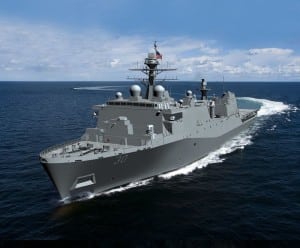
NATIONAL HARBOR, Md. – The leaders of the House Armed Services Committee (HASC) Seapower subcommittee support continuing the Flight II San Antonio-class (LPD) amphibious transport dock ships, as opposed to Navy plans in the latest budget request to end it. During a panel here at the Navy League’s annual Sea Air Space expo on Monday, Rep. Joe Courtney (D-Conn.), chairman of the HASC Seapower subcommittee, said he is in favor of the Marine Corps’ request for advance procurement funds for…

 By
By 











